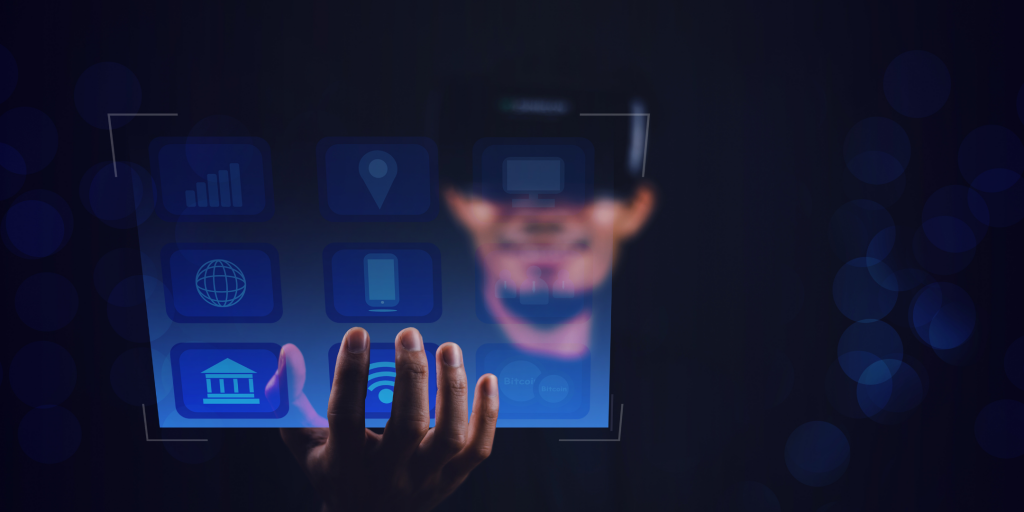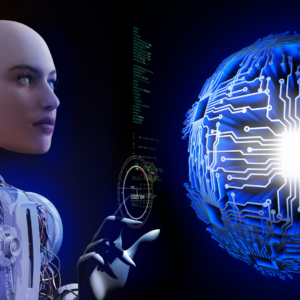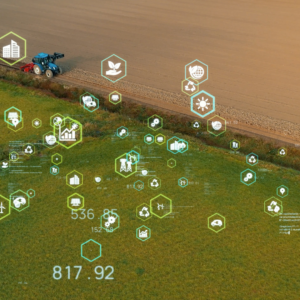Businesses must think creatively and embrace innovation in order to keep up with competition in the 21st-century marketplace. Talent and digitalisation play a fundamental role in this arena – ‘state of the art’ practices in the business world are characterised by the integration of technology with human skills. The bionic company is one such approach, combining human and technological excellence.
The bionic ecosystem mines the intersection of talent and technology to develop sustainable business strategies. With a powerful fusion of digital tools, new leadership strategies and a focus on acquiring the right mix of skills, adopting bionic business practices can empower organisations to tackle the challenges presented by a fast-paced, volatile and globally integrated business environment.
Table of Contents
Challenges and opportunities in a new era
During the pandemic, we witnessed an unprecedented technological leap. We have now entered a new epoch, where nothing is the same. The acronym VUCA expresses some of the key qualities of the landscape: volatility, uncertainty, complexity and ambiguity. In this fluid and interconnected world – a world that continues to change at an astounding speed – businesses must expect the unexpected.
Enterprises must face the challenge of transforming their business models in order to keep up with rapid digital transformation and global competition. Other key considerations that must be dealt with are sustainability, ensuring data privacy and nurturing talent. On the surface, this may seem overwhelming: businesses often feel that they don’t have the resources to invest in these areas. Moreover, adopting new models also requires a change in organisational culture and leadership mentality, which may seem even more daunting.
However, by embracing a digitally-driven strategy that combines the power of technology with human talent, businesses can improve their efficiency, competitiveness and flexibility in the long term. The bionic approach enables companies to develop new products and services that allow them to stand out from the competition, optimise their processes and create sustainable solutions that combine ecology and profit.
What is the bionic approach?
The bionic company is a new kind of organisation in which no digital process exists in isolation: instead, human capital and technology are seamlessly integrated. Based upon a dynamic combination of artificial intelligence, machine learning, platform-based software and digital talent, the bionic approach promotes agility, innovation, multi-disciplinary processes and decentralised decision-making at all levels of an organisation.
The goal is to create an environment that is simultaneously virtual and presential – a space which is interactive, immersive, inter-operable and can be accessed from any device, in any location, in any format. If widely adopted, this kind of bionic environment has the potential to create new levels of cooperation and interconnectivity between all areas of the business world.
Bionic principles also present opportunities for society as a whole. Organisations such as public administrations, universities and schools also stand to benefit from the bionic model’s focus on dynamic decision-making, knowledge exchange and talent growth.
The principal elements of the bionic ecosystem
The bionic ecosystem is based on the concept of the phygital: the use of technology to create a blend of physical and digital experiences. The bionic approach adds immersive and ubiquitous computing to the phygital environment to give the user the sense of being completely absorbed in their surroundings while being able to be present in different spaces and contexts simultaneously.
This has major benefits both in the consumer space and in the workplace. The key technical elements of such a space are the following:
- A combination of face-to-face locations and metaverse worlds
Physical locations form the nodes of the bionic company ecosystem, while metaverse applications allow hundreds of millions of users to access services from their devices. In the coming years, virtual reality, augmented reality and mixed reality devices will become more and more pervasive, creating endless new possibilities for creative uses of digital and physical spaces.
There are already accessible, user-friendly versions of VR, AR and MR devices on the mass market, such as Meta Quest Pro, Pico and Microsoft’s Hololens. As these devices grow in popularity and Web 3.0 gains force, virtual assets are predicted to become a new source of profit for businesses, as users become more interested in the possibility of owning digital objects in the virtual space.

- Ubiquitous computing
Ubiquitous computing liberates the user from the limitations of the desktop. It creates an invisible platform that operates seamlessly across multiple devices – from laptops to smartphones to the Internet of Things. Low-cost data sensors create almost endless possibilities for smart devices, which are set to usher in a new era of intuitive computing.
This bionic approach creates greater accessibility and flexibility for both workers and consumers – and more effective relationships and interconnectivity as a result. Not only does this generate greater efficiency in processes overall: it also enables faster and more effective collective decision-making, with gains in productivity across the board.
- Content and digital marketing
The phygital environment provides a wide array of unique possibilities for content creation, which will help businesses attract customers and share information throughout their workforce. Events, exhibitions, workshops, presentations, massive online open online courses and product presentations are some of the many examples of how content creation can be used to drive engagement both within the business and from the public.
Taking a dynamic perspective towards content creation also ties in with the necessity for effective digital marketing. The content created by a bionic company can be mobilised to drive organic interest and engagement from an audience across a variety of platforms. Businesses can build brand loyalty by connecting in real time with clients, increasing the visibility of the business’s product or services and building a relationship with customers.
- Business intelligence platforms and blockchain
Tailored Business Intelligence platforms can provide organisations with capabilities including intelligent analysis, automated reports and dashboards and streamlined platform integration. By combining business analytics with blockchain technology, businesses can obtain not only a better understanding of the information that they gather, but also a database that is secure, transparent, decentralised and resistant to attack.
Thanks to its unparalleled ability to safeguard information, blockchain also offers many other applications for the bionic company – including doing away with the need for third-party providers when conducting global transactions, taking control of supply chains and real-time resource usage tracking. This powerful tool allows businesses to create safe, personalised networks and transactions, fundamentally restructuring the way that the corporate world operates.
What is bionic talent?
In the bionic company, the human element is an equally critical part of the ecosystem – and soft skills like collaboration and creative and critical thinking are of paramount importance. Up-skilling and reskilling are constantly offered in order to grow internal talent. The organisational structure empowers employees to take agency over their work. Rather than the traditional top-down management pyramid, a node-based model of small teams allows decisions to be taken quickly.
This adaptive and flexible approach opens the door to the wide array of skills that high-value freelancers can bring to the table. Experienced freelancers are able to develop unique projects for businesses, as well as provide a dynamic attitude and refreshing perspective that can only come from outside of the endogamic system. T-shaped professionals – a term which refers to someone with a depth of specialised knowledge in one area, combined with a breadth of general skills and a curiosity to learn – fit particularly well with the ethos of the bionic environment.
Interim managers can be particularly invaluable to businesses taking steps to implement a bionic company structure. Freelancers who specialise in digital transformation are equipped to build and develop tailored bionic processes for businesses and are experienced in helping organisations through moments of transition and cultural change. They can model bionic leadership practices and implement new organisational structures over a defined time-span, with specific, measurable goals in mind.
What is bionic leadership? Leaders in a bionic company are characterised by their sense of purpose: they define objectives and key results and take effective and clear decisions to align the organisation around common goals. They use digital solutions to mobilise development throughout the organisation at all levels. What’s more, they are continuously learning and adapting to confront new challenges that arise in their industry.
What solutions can a bionic company offer?
Implementing a bionic company can offer both immediate and future solutions for businesses. In the short term, the combined capacity of humans and machines allows businesses to develop better relationships with clients. Meanwhile, in the long term, it can generate new business ideas and opportunities for users at all levels. The creation of customer experiences that are immersive, immediate, interactive and personalised brings with it a higher level of engagement and a raft of possibilities for exploring new segments of the market.
Bionic processes make operations more productive and raise the overall level of innovation in an organisation. In particular, data solutions give bionic companies an edge in terms of productivity and efficiency. Consolidated platforms ensure that all of the information that is required for employees to carry out tasks is always accessible and up-to-date. The use of machine learning and artificial intelligence allows organisations to analyse their data in order to understand their place in the market better, enabling them to make faster and smarter decisions.
Additionally, the bionic approach promises a new horizon of interconnectivity– both internally within the business, throughout the wider industry and in society as a whole. This will become even more apparent as augmented and mixed-reality glasses and virtual avatars become more commonplace, allowing teams to connect from anywhere in the world. This has the potential to have a highly positive impact on the global community, generating social, scientific and technological advances, and rewarding cooperation, competition and sustainability.
Assemble the team you need
The rewards of implementing a bionic company are manyfold. With new frontiers of connectivity and interaction on the horizon, you need the talent to navigate this fertile new landscape. As touched on, embracing the next generation of HR strategy will be essential to making these next-generation ideas come to fruition. High-value freelancers will hold the key.
The expertise needed to set this process in motion is at your disposal. Outvise’s network boasts experienced and fresh talent alike, from Agile management experts to Data Architects. Explore Outvise’s portfolio of specialist freelancers to find the bionic talent you need today.
Guillermo is an experienced professional skilled in public service, executive leadership, and entrepreneurship. He brings a strategic vision and a focus on generating sustainable value to companies, SMEs, CEOs, and entrepreneurs. With expertise in digital transformation and project management, he has collaborated successfully with Public Administrations and Institutions, contributing to valuable projects. Guillermo is known for driving transformative change and is a trusted advisor in facilitating innovation.




No comments yet
There are no comments on this post yet.